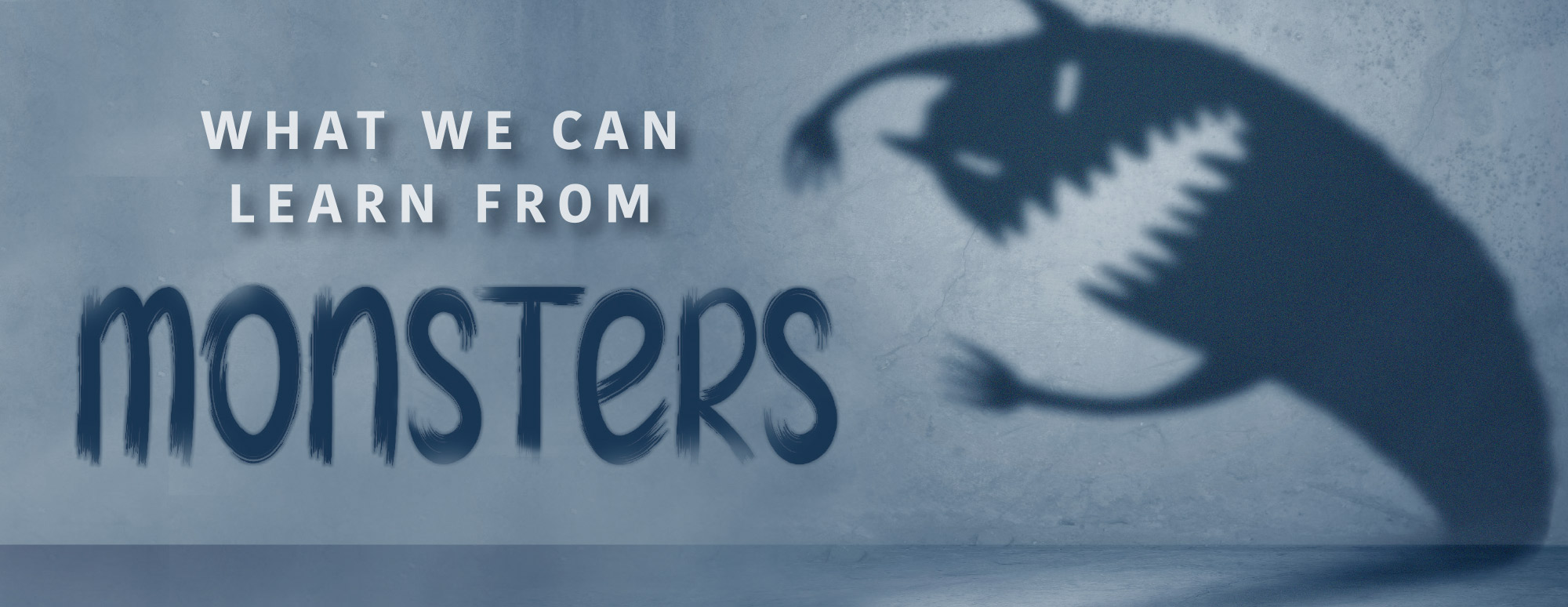
onsters have plagued humanity for millennia, always lurking in the shadows and dark corners of our civilized world. They are born from fears we have about the unknown. They are conquered when we either find out the true nature of something unknown or become familiar with things previously alien to us. They represent our anxieties, both as individuals and as societies.
Before popular culture, some of the earliest monsters to appear were drawn on maps of the world. Here we could see entire civilizations of “monster races” living on the outskirts of the known world. These “monsters” represented the xenophobic attitudes the civilizations that created them had against those who lived outside of their culture. As societies mingled and interacted, these depictions of each other as actual monsters slowly dissipated, but the idea of the “monster other” remained for centuries to come.
Even today, it is not uncommon for us to call the reprehensible actions of our enemies “monstrous.” Dr. Seth Pierce has taken the concept of a monster and turned it into a tool of academic and biblical study. In his “Monsters, Faith, and Pop Culture” class at Union College, and more recently his “Beast and Bible” podcast, Pierce encourages people to consider what monsters symbolize. From the horrors on the silver screen to the beasts within religious texts, monsters exist for more reasons than just to scare us.
“Even the monsters in the Bible, as well as the monstrous parts of the Bible, must have some use,” says Pierce. “Historically, all religions have monsters. This has led to persecution and moral panic. Finally, monsters are present in popular culture. Popular culture is increasingly recognized in both religious and communication literature as an important vehicle for the spread of ideas. Being able to give students good media tools to discern truth from error is vital. We need to critically think about the media presented to us.”
Pierce first became interested in the concept of monsters as a tool for religious study when he was asked a very difficult question after church. “Someone asked me out loud at a potluck if the curse of Cain had to do with making someone’s skin black,” said Pierce. “It was a horrifically awkward moment that neither my theology classes at Union College nor my Master of Divinity at Andrews University had prepared me for. Besides just saying, ‘No, that’s absolutely not correct,’ I had no idea what to say because I had no idea where that question came from.” This experience led Pierce down a path to find out where this monstrous idea came from. He discovered that it originated from a text by Augustine of Hippo called “City of God” that speculated on why some people have dark skin as well as the origin of monsters.
“That experience really opened up an area of inquiry into Christian texts dealing not only in the monsters in Daniel and Revelation but also into mythical beasts, folklore, and really strange ideas about the world,” shared Pierce. “There is a lot of odd and interesting theological history wrapped up in what people consider monstrous.”
Just as Pierce stated, many monsters find their roots in folk tales. A lot of these folk tales are told as a means of preserving a certain cultural value through fear. One example of this is the infamous cannibal spirit of Algonquin legend, the Wendigo. This monster displays the dangers of greed and the winter while encouraging fellowship and selflessness. Another is the devilish German antithesis to Santa Claus, Krampus, who encourages good behavior and obedience in children. Some cultural monsters were even created as representations of the oppression different groups faced at the hands of other cultures. Across the world and history, monsters have been used to encourage and/or discourage certain behaviors.
“It is important to address these things from a Christian worldview to understand them better and see how they are not something to be scared of,” said Pierce. “We can’t ignore the difficult monstrous moments in Scripture and in Christian life; instead, we need to figure out how they fit into our picture of a loving God.”
Monsters are much more than just a vehicle for horror and a tool to scare us; they are ingrained into our very perceptions of the world around us. They are physical manifestations of evil in this world that serve as a reminder that we need to always cling to the good that exists through God. They are created when we do not cling to that good and instead succumb to our own sinful indulgences. Whether they epitomize people, places, creatures, or even concepts, monsters remind us of the importance of keeping God at the center of our lives and what we can become when we don’t.